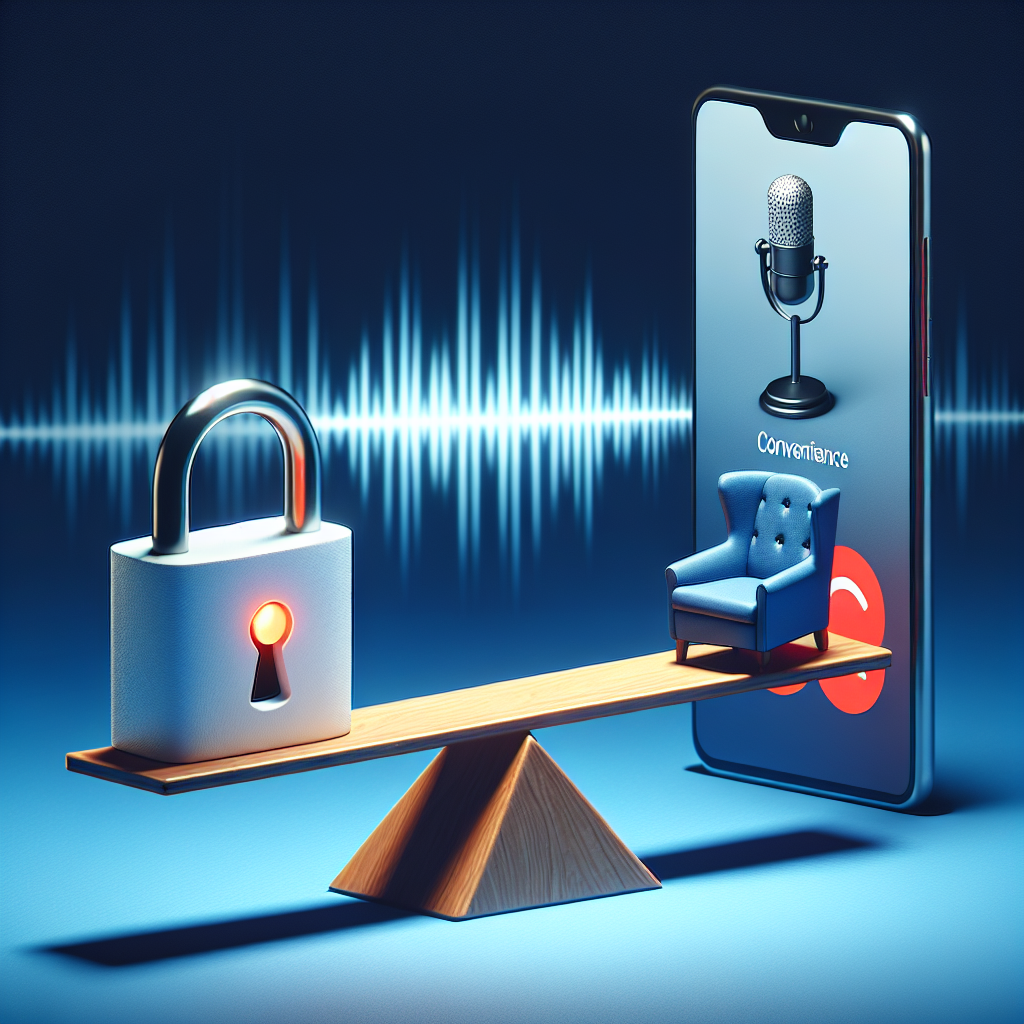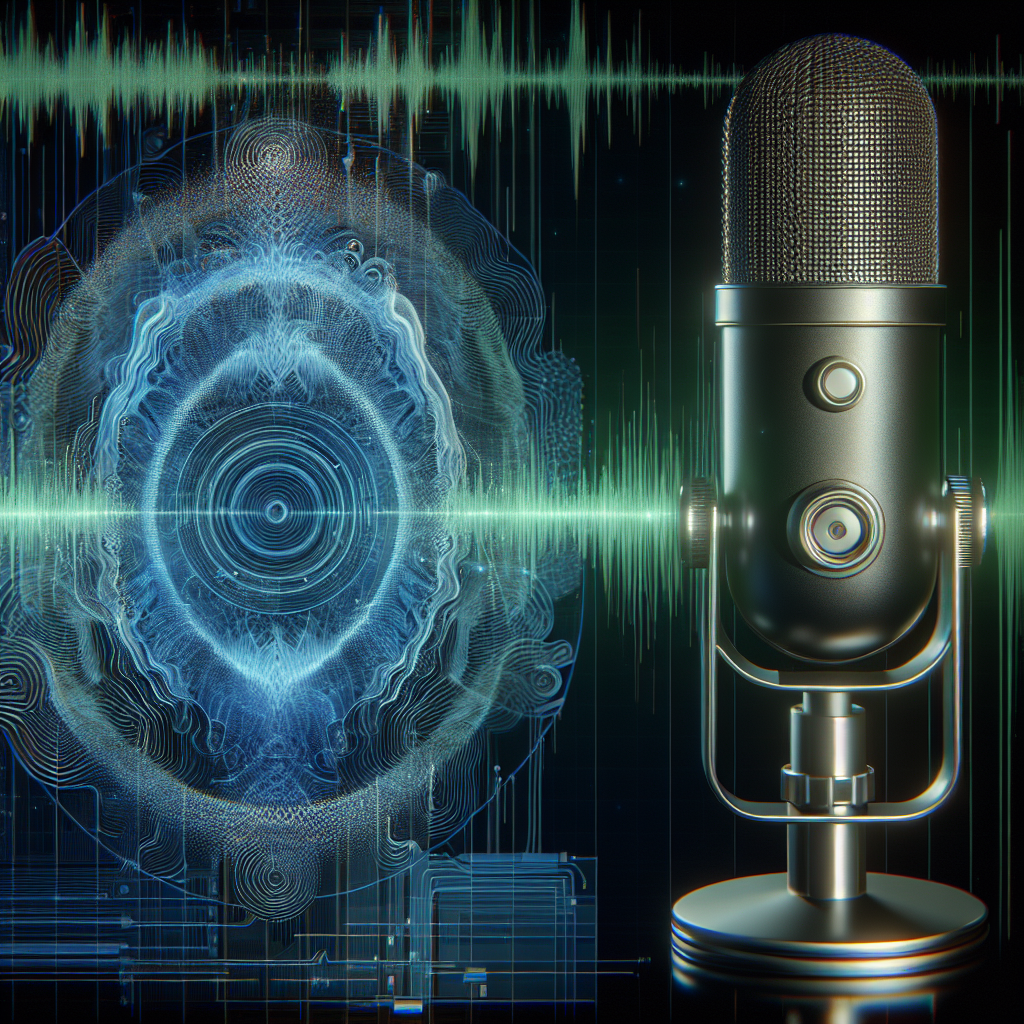
In the sphere of modern telecommunication and customer service systems, there is one technological advancement that stands out in its capacity to merge security and convenience: Voice-Based Caller Authentication. The voice-based authentication technology, also known as Voice Biometrics, enables systems to verify a person’s identity using unique characteristics inherent in their voice pattern. This method of authentication is gaining popularity, primarily because of its efficiency and the level of convenience it affords users, especially in our high-paced, tech-enabled era.
Consider this scenario: a client connects to a customer service hotline and needs to verify their identity before proceeding. In traditional systems, this often involves remembering and providing a sequence of personal information—a process that can be both cumbersome and time-consuming. With Voice-Based Caller Authentication, the entire process is significantly simplified. The customer's voice is recorded and matched against their unique biometric voice pattern stored in the system—a seamless procedure that grants access with ease yet guarantees stringent security.

As telecommunication systems become more sophisticated, Voice Authentication Technology is playing an increasingly vital role. It is not only about delivering excellent service—it's also about protecting the individual's personal information, ensuring the systems we use are robust against security threats. Moreover, by transitioning from traditional authentication means (like PINs and security questions) to voice-based solutions, companies can promote customer loyalty and confidence in the security of their systems.
Voice-Based Caller Authentication is an emblem of progression in telecommunication technologies and a testament to humanity's endless pursuit of comfort and security. It is a technology that stands at the intersection of accessibility and protection, catering to user convenience without compromising on the necessity for secure authentication.
For decades, passwords and PINs have been the cornerstone of system security-access models. But with the advent of more advanced technologies, methods like voice-based caller authentication are quickly gaining traction. By employing a person's unique voice attributes, this form of authentication marries security with convenience.
At its core, the process of voice authentication hinges on two key facets: an individual's speech patterns and AI learning models. Each person possesses a unique voiceprint that's shaped by physical and behavioral factors. This could be the size and shape of your mouth, the accent you picked up from your hometown, or even habitual inflections.
To capture this distinct vocal identity, voice-based caller authentication systems use voice biometric technology or speech pattern analysis. These systems break down recordings into multiple frequencies, deriving a mathematical representation of the speaker's voice. Importantly, this process only requires 1-2 minutes of sample speech.
Once the representative voiceprint has been established, it is checked against the caller's voice during authentication, effectively mitigating fraud risks. However, this process isn't perfect, and misrecognition can be caused by factors like background noise, sore throat, or even mood swings.
This is where AI learning models step in. With techniques like Wavenet, systems can be trained to better understand context, adapt to changes, and improve over time. They pull in data from various instances and train themselves to recognize a person's voiceprint more accurately.
In this balance of convenience and security, it's crucial to note that voice-based caller authentication doesn't replace traditional security-access models entirely, but rather enhances them. For instance, companies like Apple allow for voice authentication in conjunction with FaceID or TouchID as an added layer of security.
This fusion of technology and human uniqueness is not just the future—it's actively shaping our present, offering a comfortable, convenient approach to security measures.
In an age where underage hackers can breach established security systems easily, a robust and innovative approach is needed to protect users' privacy. Voice-based caller authentication offers promising solutions to mitigate fraud and unauthorized access.[1] Leveraging the technology's unique attributes can drastically improve overall systematic security.

Voice-biometrics, responsible for the unique individual voice prints, is inherently difficult to imitate or steal, unlike conventional passwords. Even slight variations in pitch, tone, and accent result in drastically different voice prints. The uniqueness of every human voice provides an effective layer of security.[2]
Further, voice-based authentication systems harness sophisticated algorithms to identify signs of tampering. They extend beyond merely matching voices, incorporating elements such as the individual's speech pattern, pronunciation, accent, and speed.[3] All these factors, collectively termed as "behavioral biometrics", virtually make voice authentication impervious to spoofing and unauthorized access.
Despite these features' aura of impenetrability, voice authentication systems are not foolproof. For instance, voice modulators and professional impersonators can potentially infiltrate the system. However, the higher level of complexity and expertise required for this covers a vast majority of users, raising the system's security a few notches above existing methods.[4]
In essence, voice-based caller authentication plays a key role in fortifying security controls. By countering fraud and unauthorized access with an individual’s unique voice signature, it adds a layer of complexity to the authentication process, significantly decreasing the probability of intrusion. While not invincible, it contributes greatly to maintaining the delicate balance between convenience and security.[5]
In an era where digital security is paramount, voice-based caller authentication finds itself playing a pivotal role. Yet, as crucial as it is, its task also includes delivering convenience. Speed and ease-of-use are two remarkable constructs that shape how effectively convenience is perceived in the sphere of customer interactions.
The former, speed, directly stems from the technology’s capability to address and authenticate callers swiftly. A delightful aspect of voice-based authentication is that it reduces the need for interminable verifications, hence trimming down the tedious time spent by callers. Corporations using voice biometrics such as Nuance Communications have stated that this technology can confirm identities in less than ten seconds, significantly expediting the customer care process.
Adopting parallel data processing and machine learning algorithms, voice authentication systems can analyze voice patterns almost instantly. Furthermore, even as technology evolves, voice authentication systems continuously learn, adapt, and improve, which enhances their speed and efficiency over time.
Turning to ease-of-use, voice authentication presents a frictionless mode of verification. Customers need not remember passwords or answer security questions, rather, their unique voiceprint serves as their key. This simplifies the process significantly for the vast majority of customers, particularly those who might struggle with digital literacy or have disabilities that traditional authentication methods do not consider. Today, a myriad of businesses, such as HSBC, employ voice-based authentication to improve customer experiences.
To sum up, voice-based caller authentication, striking a balance between offering top-notch security and supplying unparalleled convenience, is steadily becoming a staple in customer service. Its ability to process quickly along with its simple use make it an appealing choice for organizations seeking to secure their customer interactions and deliver a seamless service.
In the pursuit of robust security measures, organizations worldwide are turning to innovative forms of user authentication. Voice-based caller authentication, which employs the nuances of individual speech patterns for identity verification, is one such novel technique. Nonetheless, this technology is not devoid of challenges.

The primary issue associated with these systems is their accuracy in diverse populations. Several studies reveal that these systems tend to showcase reduced effectiveness in identifying accents or voice modulations across different regions and ethnicities. This inadvertently leads to higher false rejection rates, making the technology unusable for a significant user crowd, hence compromising on the convenience aspect.
In response to these challenges, researchers and developers are working to mitigate these issues. Techniques like data augmentation, where the training set of voice samples is artificially increased by introducing variations, help in increasing the system's exposure to diversity. Moreover, the use of Deep Neural Networks (DNNs) and other advanced machine learning models can significantly enhance the accuracy and scalability of voice-based authentication systems.
Another major hurdle is the susceptibility of these systems to spoofing attacks where an impostor imitates the voice of the genuine speaker. However, developers have made strides in building countermeasures against it. Techniques such as liveness detection, which differentiates between a live speech and a recorded one, and voice bio-metrics incorporating physiological attributes of the speaker, significantly mitigate the risk of spoofing.
It is evident that while voice-based caller authentication enhances security, it also presents several challenges. With continual research and advancements in technology, developers are striving to strike a balance between the security it provides and the convenience users demand. As the trade-off between security and convenience continues to narrow, the future of voice-based authentication looks promising.
In the fast-moving world of technology, biometrics has emerged as a key area of innovation. No longer limited to fingerprints or facial recognition, the recognition frontier has expanded to include voice-based authentication systems.
Voice recognition offers a unique combination of security and convenience, making it particularly appealing. After all, the human voice is unique, making it difficult to fraudulently replicate. At the same time, voice-based systems allow businesses to enhance user experience by providing hands-free access to services.
Futuristic technology such as artificial intelligence (AI) and machine learning (ML) plays a critical role in propelling voice authentication forward. By learning and adapting to a user's voice over time, these systems can achieve remarkable accuracy. According to Global NewsWire, the voice biometrics market is expected to reach over four billion US dollars by 2027, reflecting its rising popularity.
There's been significant investment in the area of liveness detection. This feature allows systems to distinguish between a live human voice and a recording, adding an extra layer of security to voice-based systems.
Besides, voice-based caller authentication systems are starting to leverage contextual information for more accurate authentication. By understanding the context in which commands are given, systems can more effectively authenticate a user.
However, as is often the case with emerging technology, there are challenges to overcome. Concerns regarding privacy and data protection are foremost amongst these. Developers will have to tread carefully, ensuring that stringent security measures are in place and ethical guidelines adhered to.
In the balance between convenience and security, voice authentication technology signals an exciting development. The advent of AI and ML is paving the way for a new era where user interaction is not merely about inputs and passwords, but the unique characteristics that make us human.
Start your free trial for My AI Front Desk today, it takes minutes to setup!








